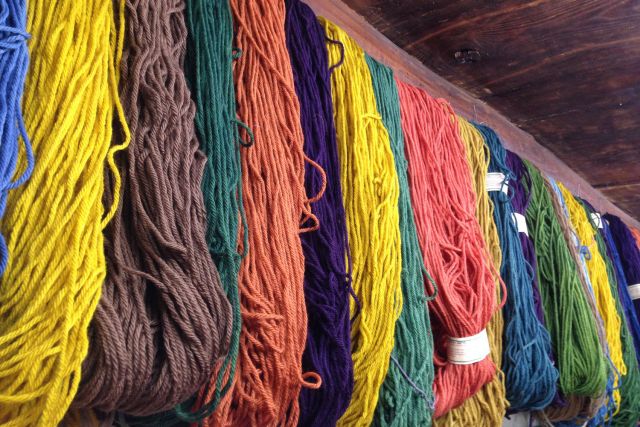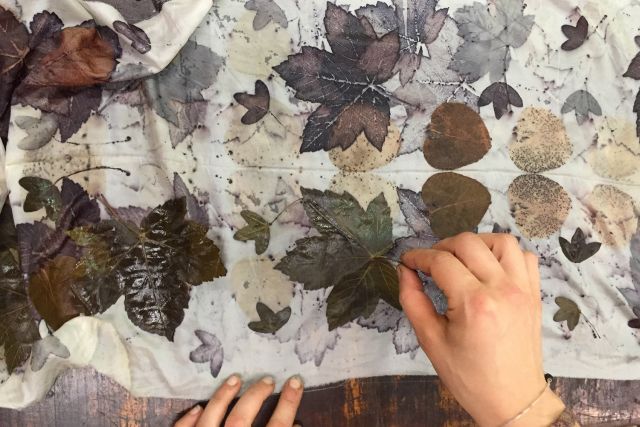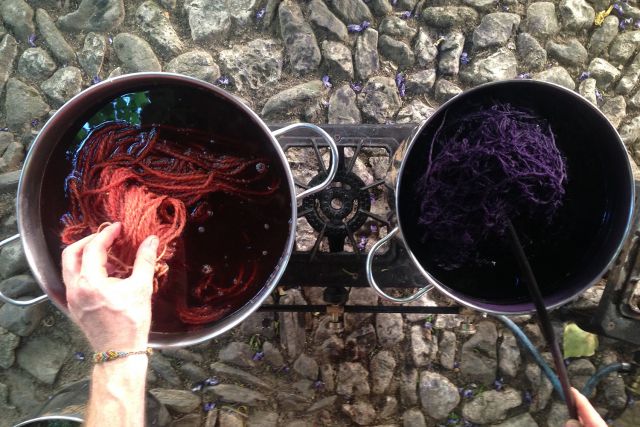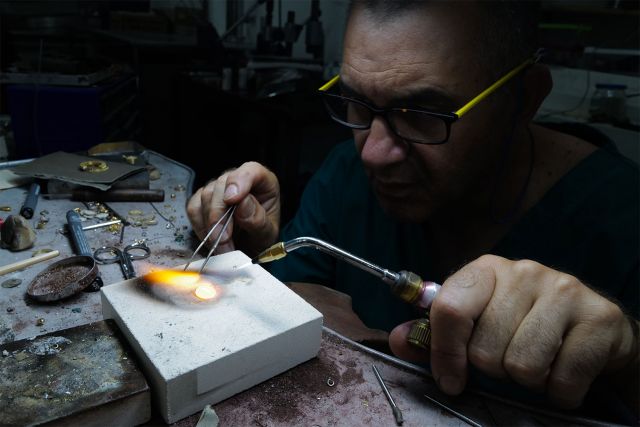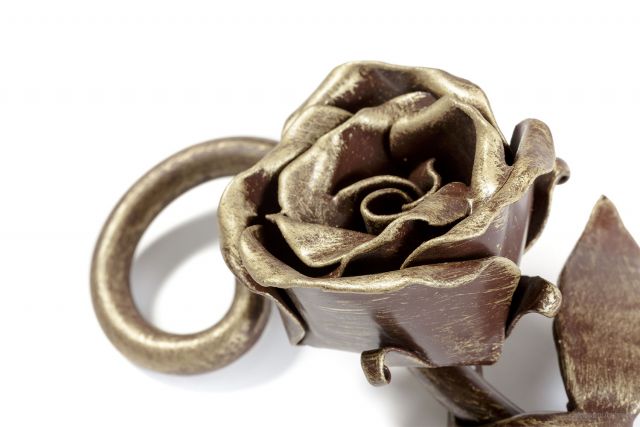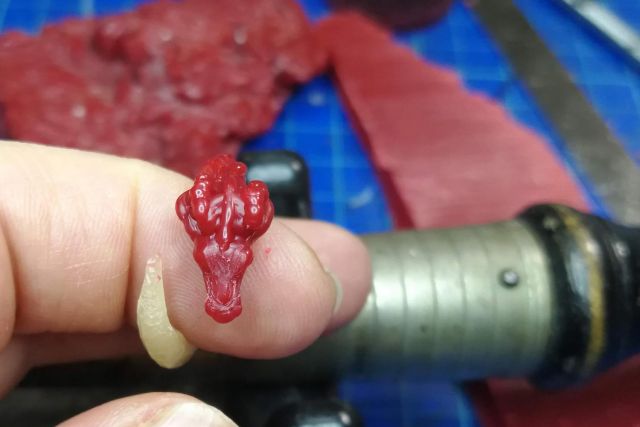This rainbow-coloured backpack is made of Sardinian wool and cotton, both naturally dyed in La Robbia workshop with wild plants and plant waste. The fabric, made on a loom, is characterised by bright colours with a melange effect.
Height 34 cm
Width 30 cm
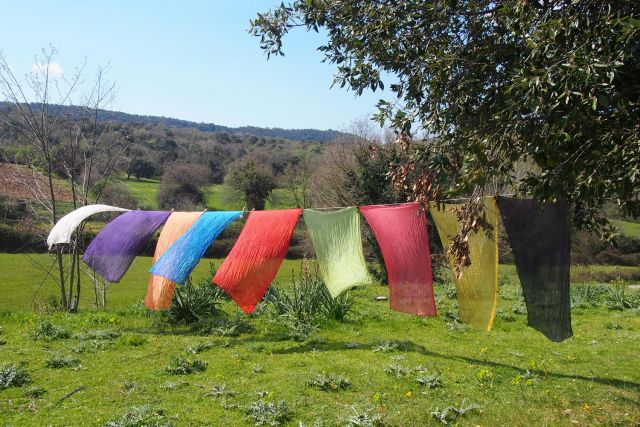
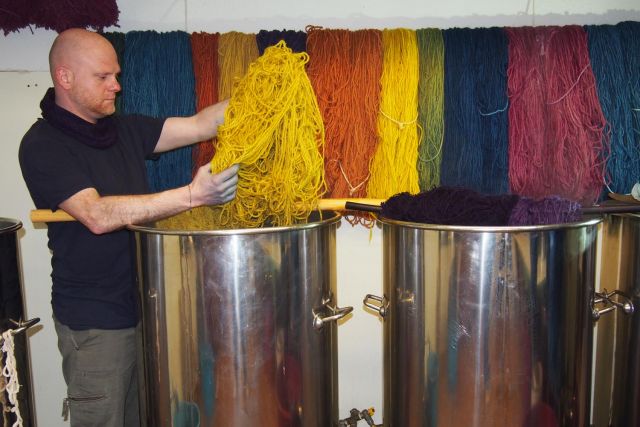
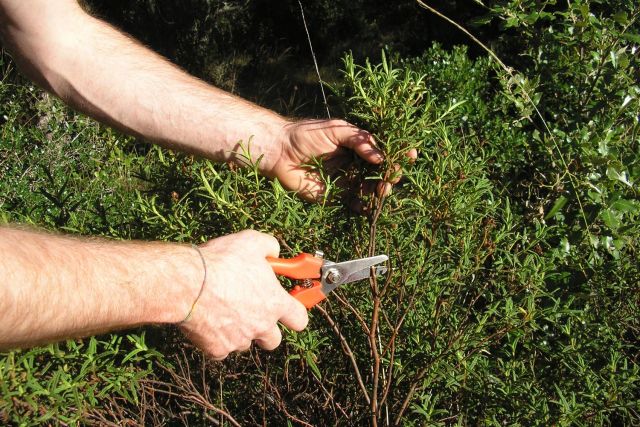
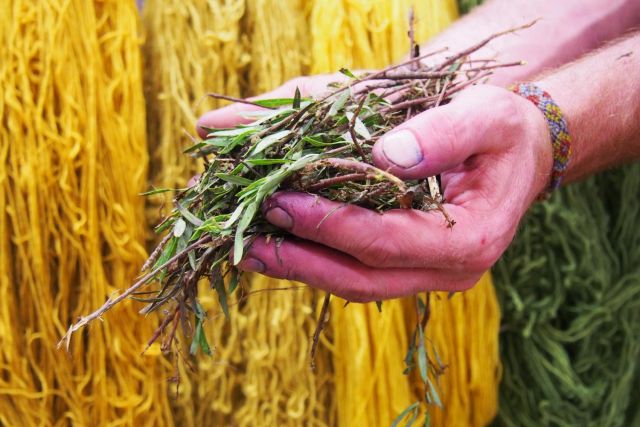
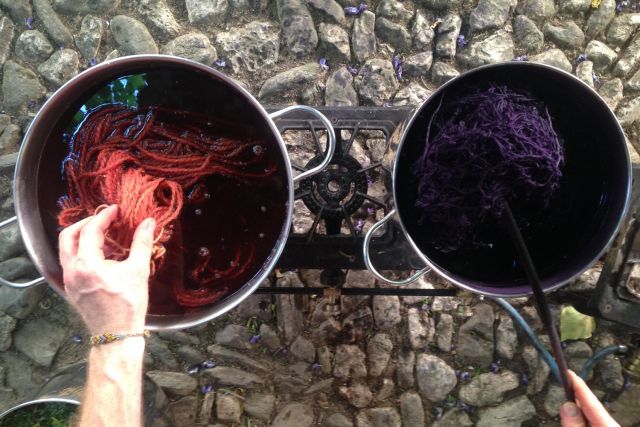
Maurizio Savoldo
- La Robbia
- Textile dyer
- Atzara, Italy
- Master Artisan
By appointment only
+39 3382773369
The ancient art of botanical colour
- • Maurizio has revived the long-lost art of natural dyeing
- • He uses local wild plants and plant waste to dye wool, silk and other fibres
- • He learned dyeing recipes from the elders of his native Sardinia
Born and bred in the heart of Sardinia, Maurizio Savoldo became passionate about natural dyeing in the early 2000s, while studying Natural Sciences at university. For his graduation thesis in systematic botany, he focused on local plants and interviewed many elders in their nineties to retrieve the ancient dyeing recipes that nobody else could remember. Previously, natural dyeing had been very common on the island for centuries, but it gradually fell into disuse because of synthetic dyes and the crisis of the local textile industry. Since he opened his workshop La Robbia in 2005, he has been the only professional natural textile dyer in Sardinia since the Second World War. At the beginning it was tough, people didn’t want to buy his yarn, because it was more expensive than the chemically-dyed one. But environmental awareness has increased in recent years and now Maurizio's work is more appreciated.
Read the full interviewWorks
Photo: ©La Robbia

Photo: ©La Robbia
Blue backpack, made of Sardinian wool and cotton naturally dyed in La Robbia workshop with wild plants and plant waste. The fabric, made on the loom, is characterised by vibrant colours with a melange effect in different shades of blue.
Height 38 cm
Width 32 cm

Photo: ©La Robbia
Both feminine and practical, this shoulder bag is made of wool and cotton naturally dyed with cochineal, a parasite that lives in prickly pears. It is lined with linen and cotton, has strong wide handles and comes with a matching pouch inside.The fabric, made on a loom, has a nice melange effect in the shades of pink and purple.
Height 34 cm
Width 44 cm

Photo: ©La Robbia
Mustard-coloured ball of Merino virgin wool, naturally dyed with wild plants and plant waste. Being a hundred percent natural, this wool doesn’t cause allergies and is recommended for the most sensitive skin. Its texture is extremely soft and pleasant to touch.

Photo: ©La Robbia
Pink and purple balls of Sardinian wool, naturallydyed with wild plants and plant waste. Being a hundred perscent natural, this wool doesn’t cause allergies and is recommended for the most sensitive skin. Its texture is extremely soft and pleasant to touch.





